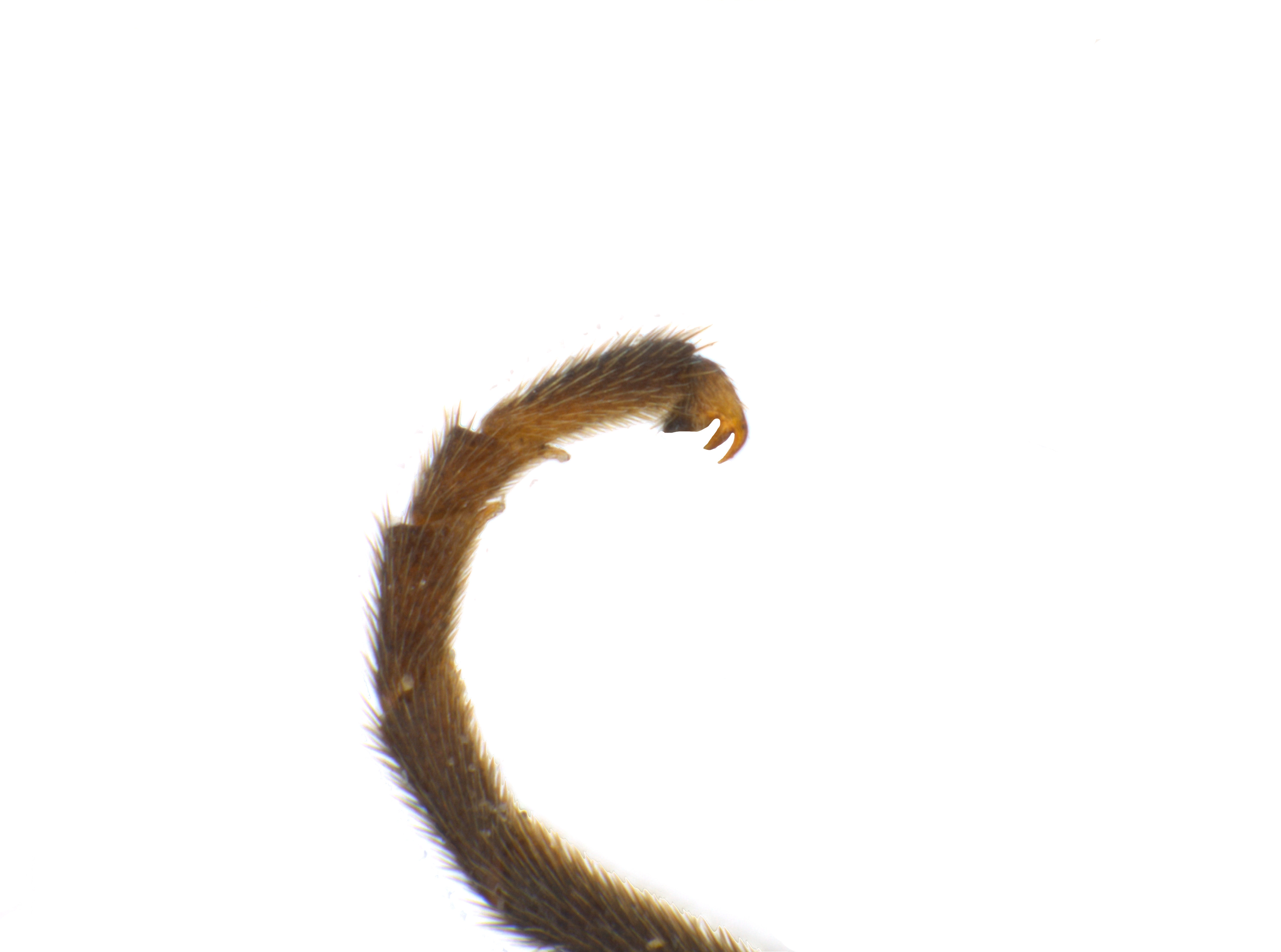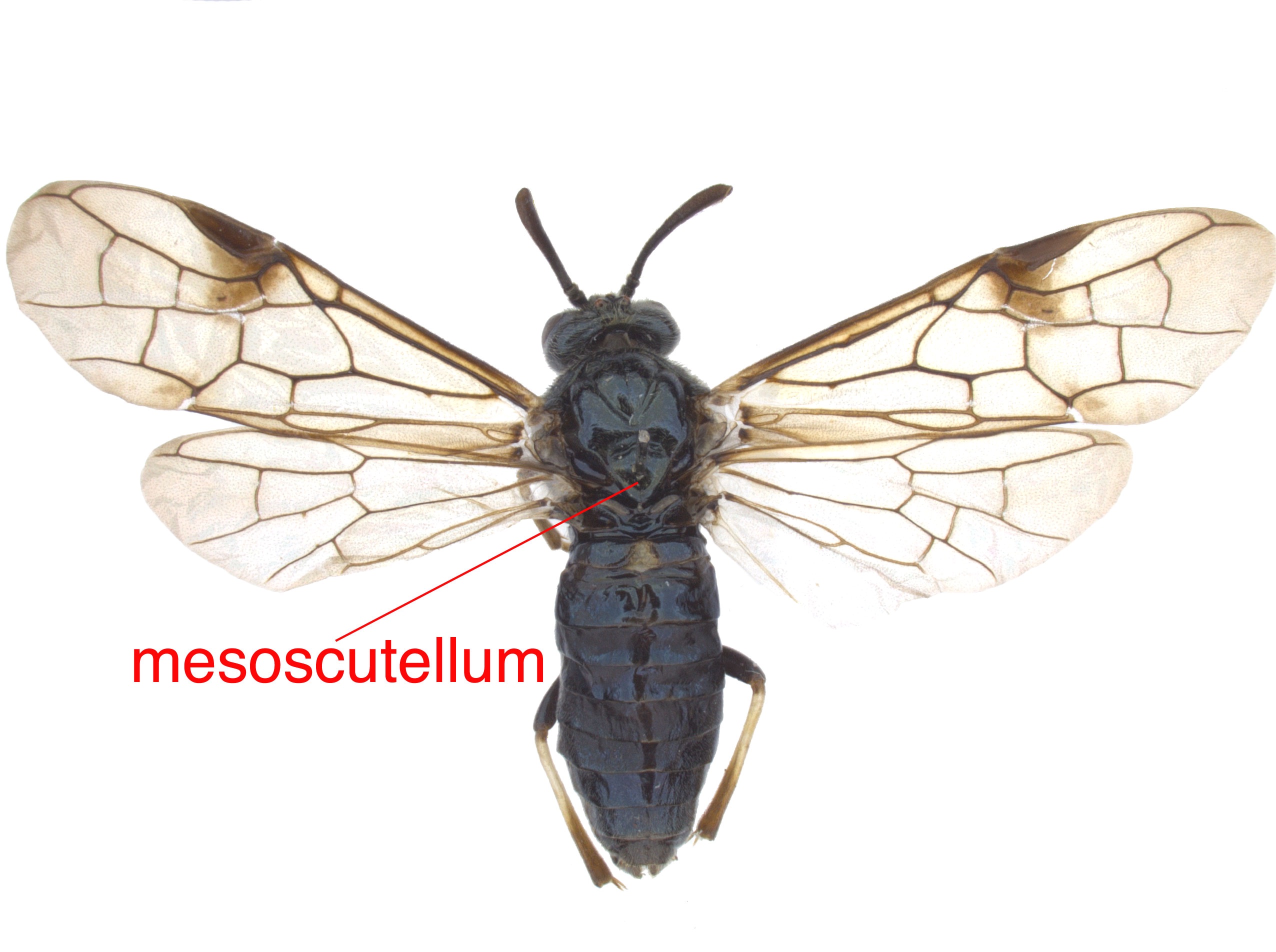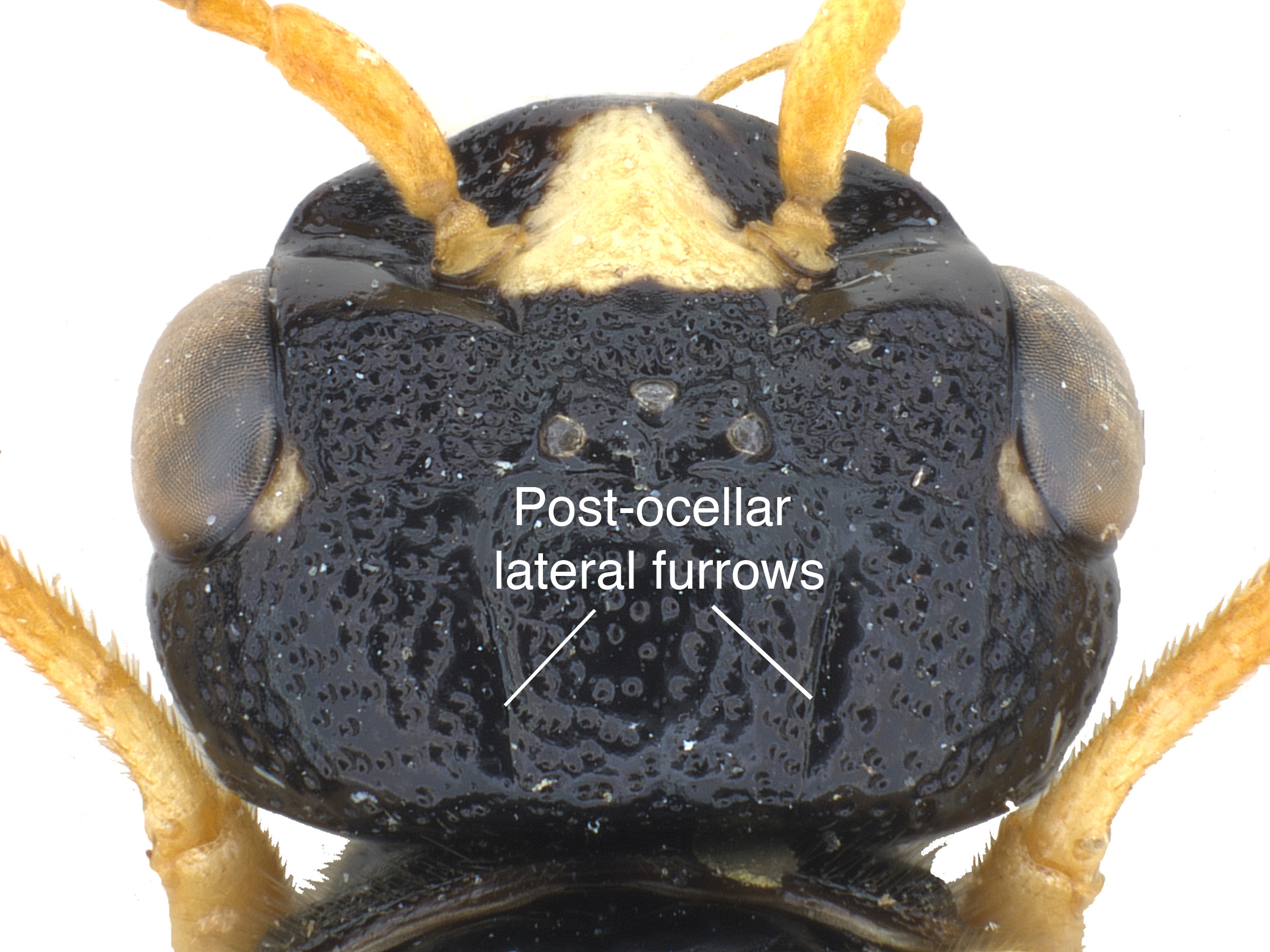Family: Tenthredinidae
Family common name: common sawflies
Subfamily: Blennocampinae
Tribe: Blennocampini
Genus: Monardis Enslin, 1914
Subgenera: none
The Tenthredinidae are the most species-rich family and are found throughout the world, in all continents but Antarctica. They are known as the “common sawflies.” They can generally be recognized by a cylindrical body and long, segmented antennaeantenna:
the sensory organ emerging from the front of the head, usually between the compound eyes and above the clypeus; includes the flagellum, scape and pedicel
 . Otherwise, they come in a variety of colors, sizes, and forms (Goulet 1992Goulet 1992:
. Otherwise, they come in a variety of colors, sizes, and forms (Goulet 1992Goulet 1992:
Goulet H. 1992. The genera and subgenera of the sawflies of Canada and Alaska: Hymenoptera. Symphyta. The insects and arachnids of Canada. Part 20. Agriculture Canada Publication.).
Sawflies in the subfamily Blennocampinae have a diverse set of life histories and habits. Many species are restricted to subtropical and tropical regions, but the genus is still fairly species-rich in North America. Blennocampinae includes many sawflies that feed on ornamental and forestry crops. This subfamily can be recognized by wing venationvenation:
the network of veins on a wing
and bidentatebidentate:
having two teeth; often used in descrbing mandibles or tarsal claws
 mandibles (Smith 1969dSmith 1969d:
mandibles (Smith 1969dSmith 1969d:
Smith DR. 1969d. Nearctic Sawflies. I. Blennocampinae: Adults and larvae (Hymenoptera: Tenthredinidae). Technical Bulletin, U.S. Department of Agriculture 1397: 1-176.).
Monardis is monotypicmonotypic:
describes having only one representative; ex. a genus that includes only one species
in North America. The female Monardis pulla is medium-sized, about 6.5 mm in length, and entirely black with light-colored striping on the legs and darkened wings. The male for this species is not known (Smith 1969dSmith 1969d:
Smith DR. 1969d. Nearctic Sawflies. I. Blennocampinae: Adults and larvae (Hymenoptera: Tenthredinidae). Technical Bulletin, U.S. Department of Agriculture 1397: 1-176.).
There are eight described extantextant:
in existence; opposite of extinct
species worldwide. One species occurs in North America (Taeger et al. 2018Taeger et al. 2018:
Taeger A, Liston AD, Prous M, Groll EK, Gehroldt T, and Blank SM. 2018. ECatSymmdash;Electronic World Catalog of Symphyta (Insecta, Hymenoptera). Program version 5.0 (19 Dec 2018), data version 40 (23 Sep 2018). Senckenberg Deutsches Entomologisches Institut (SDEI), Muuml;ncheberg. https://sdei.de/ecatsym/ Accessed: 28 Jan 2020.).
Subfamily characters
 veins Cu1 and 1m-cu between 120°–150° (Goulet 1992Goulet 1992:
veins Cu1 and 1m-cu between 120°–150° (Goulet 1992Goulet 1992: veins M and 1m-cu parallel (Smith 1969dSmith 1969d:
veins M and 1m-cu parallel (Smith 1969dSmith 1969d: veins 2A and 3A incomplete (Smith 1969dSmith 1969d:
veins 2A and 3A incomplete (Smith 1969dSmith 1969d:Genus characters
 veins M, Rs+M and Sc+R all meeting at one junction (Smith 1969dSmith 1969d:
veins M, Rs+M and Sc+R all meeting at one junction (Smith 1969dSmith 1969d: veins 2A and 3A curved at apexapex:
veins 2A and 3A curved at apexapex: cellcell:
cellcell: M present (Smith 1969dSmith 1969d:
M present (Smith 1969dSmith 1969d: pits present, clearly outlined and relatively large (Goulet 1992Goulet 1992:
pits present, clearly outlined and relatively large (Goulet 1992Goulet 1992: simple (Smith 1969dSmith 1969d:
simple (Smith 1969dSmith 1969d:Monardis can be confused with similar species in the subfamily Blennocampinae. It can be distinguished from most other genera by the simple tarsal clawtarsal claw:
sharpened appendage emerging from the apex of the tarsus
 , presence of hind winghind wing:
, presence of hind winghind wing:
the posterior wing of each pair of wings
 cellcell:
cellcell:
1. a membranous area of the wing between veins, 2. a small cavity or closed space
 M, and absence of a postocularpostocular:
M, and absence of a postocularpostocular:
describes area behind the compound eye
furrowfurrow:
a groove or linear depression
 (Smith 1969dSmith 1969d:
(Smith 1969dSmith 1969d:
Smith DR. 1969d. Nearctic Sawflies. I. Blennocampinae: Adults and larvae (Hymenoptera: Tenthredinidae). Technical Bulletin, U.S. Department of Agriculture 1397: 1-176.).
Monardis plana, known as the rose bud sawfly, is a minor pest of roses in Europe. The larvaelarva:
the immature stage of holometabolous insects
 hollow out the immature buds and bore into the stems of the host and feed on the young leaves, resulting in reduced bloom (Scheibelreiter 1972Scheibelreiter 1972:
hollow out the immature buds and bore into the stems of the host and feed on the young leaves, resulting in reduced bloom (Scheibelreiter 1972Scheibelreiter 1972:
Scheibelreiter G. 1972. Die Tenthrediniden der Rose ( Rosa spec.). Journal of Applied Entomology 72: 225-259. https://doi.org/10.1111/j.1439-0418.1972.tb02240.x, Gibbs 2006Gibbs 2006:
Gibbs D. 2006. Rose bud sawfly, Monardis plana (Klug) (Hymenoptera: Tenthredinidae), new to Britain, discovered in South Wales. British Journal of Entomology and Natural History 19: 105-108.). One documented host, Rosa canina (dog rose), is also present growing wild in North America (Pavek and Skinner 2013Pavek and Skinner 2013:
Pavek PLS and Skinner DM. 2013. Roses of the inland Pacific Northwest: native and invasive species identification, biology and control. USDA Natural Resources Conservation Service, Plant Materials Technical Note 21: 1-23.).
unknown
The specific biology of Monardis pulla is unknown. One M. pulla in Oregon was recorded emerging from a pupal cellcell:
1. a membranous area of the wing between veins, 2. a small cavity or closed space
 built into the wall of a wasp-induced rose gall (Baine and Looney 2019Baine and Looney 2019:
built into the wall of a wasp-induced rose gall (Baine and Looney 2019Baine and Looney 2019:
Baine Q and Looney C. 2019. Plant associations for three sawfly species (Hymenoptera, Tenthredinidae) in the Pacific Northwest. Journal of Hymenoptera Research 74: 27-33.).
World: This genus is known from North America, Central and Eastern Europe, Uzbekistan, China, and Japan (Taeger et al. 2018Taeger et al. 2018:
Taeger A, Liston AD, Prous M, Groll EK, Gehroldt T, and Blank SM. 2018. ECatSymmdash;Electronic World Catalog of Symphyta (Insecta, Hymenoptera). Program version 5.0 (19 Dec 2018), data version 40 (23 Sep 2018). Senckenberg Deutsches Entomologisches Institut (SDEI), Muuml;ncheberg. https://sdei.de/ecatsym/ Accessed: 28 Jan 2020.).
North America: Monardis pulla occurs throughout the Rocky Mountain region, in Utah, Colorado, Montana, and Alberta west to British Columbia and Oregon (Smith 1969dSmith 1969d:
Smith DR. 1969d. Nearctic Sawflies. I. Blennocampinae: Adults and larvae (Hymenoptera: Tenthredinidae). Technical Bulletin, U.S. Department of Agriculture 1397: 1-176., Baine and Looney 2019Baine and Looney 2019:
Baine Q and Looney C. 2019. Plant associations for three sawfly species (Hymenoptera, Tenthredinidae) in the Pacific Northwest. Journal of Hymenoptera Research 74: 27-33.).
Map data from: GBIF.org (29 October 2019) GBIF Occurrence Download Monardis and the Smithsonian National Museum of Natural History Entomology Collection (USNM)
Details about data used for maps can be found here.